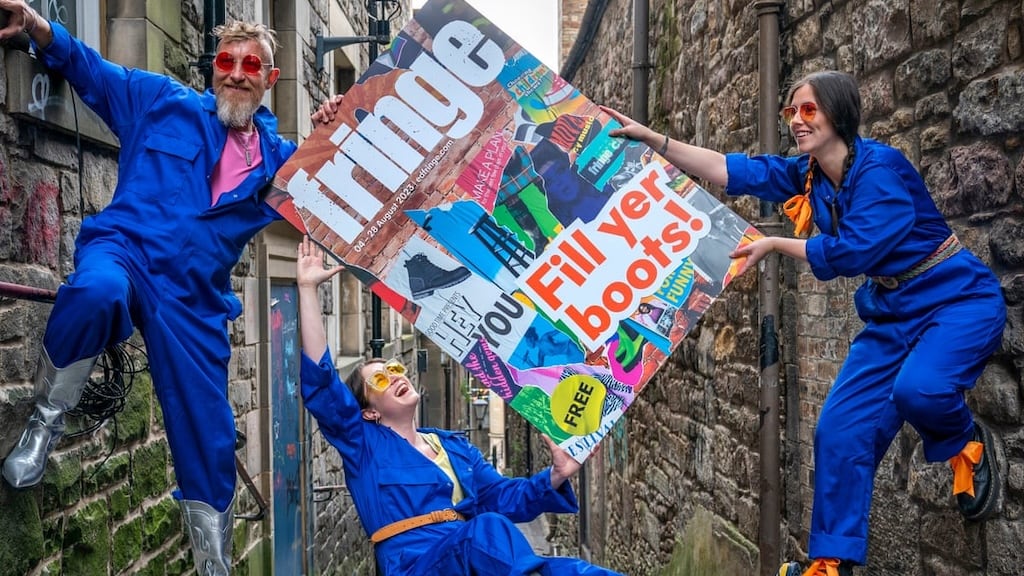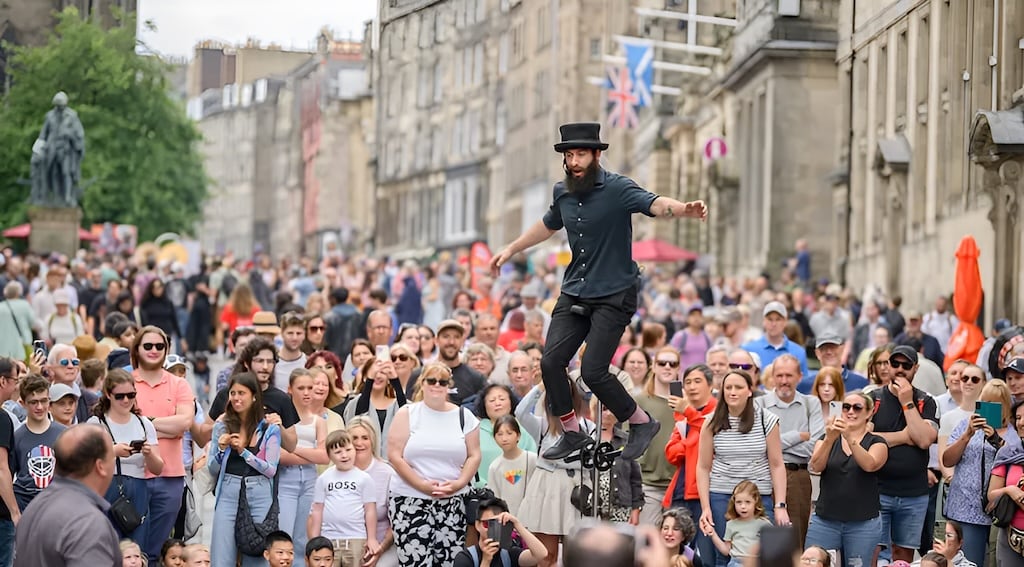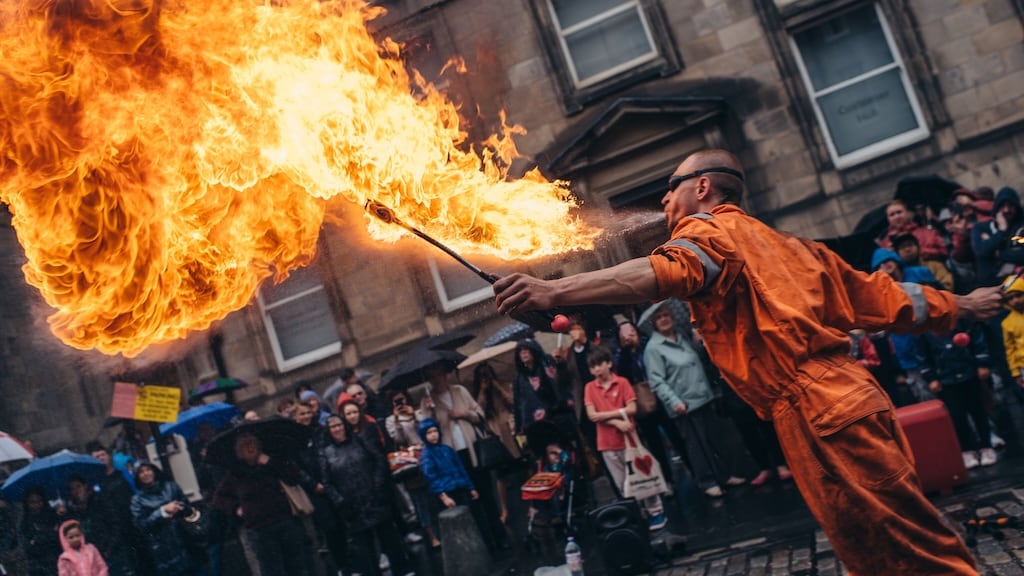How the Edinburgh Festival Fringe Conquered Scotland and Shaped a Continent
Each August, the cobblestone streets and stately theatres of Edinburgh, Scotland, hum with an almost mystical energy. It's time for the Edinburgh Festival Fringe, an unequalled and jaw-dropping arts explosion that is quite simply the world's largest arts festival.
More than just an event, it's a cultural pilgrimage for artists and audiences alike—a vibrant ecosystem where creativity knows no bounds. For three weeks, the city itself becomes a dynamic stage, hosting everything from stand-up comedy in the backroom of a pub to experimental theatre in a grand concert hall.


The Fringe is the pulsing heart of Scottish culture, a testament to the country's passion for performance and narrative. Its influence has rippled across the European continent, sparking a movement of artistic freedom and accessibility.
A History Forged in Rebellion
The Fringe's history is one of artistic, risk-taking revolt. It began in 1947, the same year the Edinburgh International Festival was established. This 'official' festival was created to celebrate and encourage European cultural life after the war. While well-intentioned, its programme was curated by invitation only, leaving many performing groups without a venue. Uninvited but undeterred, eight theatre groups took a leap of faith.
They journeyed to Edinburgh anyway, found their own alternative spaces, and performed their shows on the 'fringe' of the main event. This gesture of defiance defined the initial spirit of the movement. In the early years, there was no formal organisation, just a committed band of artists who refused to be silenced or unseen.
This open-access principle—that anyone with a story to tell and a place to tell it can participate—remains the core ideology of the Fringe today.
A breakthrough came in 1958 with the establishment of the Festival Fringe Society. The Society was created not to censor or vet performances but to provide essential infrastructure: a central box office, a complete show guide, and a point of contact for artists. This support structure was crucial, enabling the Fringe to grow exponentially from its humble beginnings into the global giant it is now. It has weathered cultural upheaval, economic instability, and even a global pandemic, rebounding each time as a powerful reminder of art's endurance and the unstoppable human need for collective creative expression.
The Fringe Phenomenon on the European Continent
The revolutionary, open-access format of the Edinburgh Fringe was a compelling and translatable idea. It has inspired more than 200 'Fringe' festivals around the world, with a particularly strong presence across Europe. Cities like Prague, Amsterdam, Avignon, and Dublin now host successful Fringe festivals, each adopting the Edinburgh model while adding its own distinct local flavour. These European cousins share the same underlying DNA: they are unjuried, uncensored, and dedicated to providing a platform for emerging and established artists to take risks.
The Prague Fringe in the Czech Republic, for instance, commandeers the historic Malá Strana quarter with English-language performances, creating an intimate and magical experience.
In France, the Avignon Off festival runs parallel to the more conventional Festival d'Avignon, taking over the city's streets for a sprawling, anarchic, and wonderful alternative where artists compete for audiences. This network of European Fringes is a testament to the universal appeal of an open and inclusive arts market, a legacy born on the streets of Edinburgh.
A Kaleidoscope of Activities and Performances
Trying to document the 'typical activities' at the Edinburgh Fringe is like trying to catch a whirlwind in a bottle. The sheer size and diversity are daunting, with tens of thousands of performances taking place. Comedy is arguably its most famous export, having launched the careers of countless household names, but it is just one piece of a massive creative jigsaw.
A Fringe-goer's day might begin with a challenging piece of student theatre and later be spent in wonder at the spectacular street performances along the Royal Mile, where living statues, magicians, and acrobats vie for attention. The evenings present a bewildering array of choices: experimental dance, gritty spoken-word poetry, interactive circus acts, a cappella concerts, Shakespearean tragedies performed in a garden, and avant-garde music recitals.
The settings are as varied as the performances. Grand Victorian theatres, university classrooms, ancient churches, double-decker buses, public toilets, and even performers' own flats are transformed into temporary venues. This creative recycling of space is central to the Fringe's unique character and charm.
The Unique Culture and Customs of the Fringe
While not rooted in ancient tradition, the Fringe has developed its own unique set of rituals. The most noticeable of these is 'flyering'. The Royal Mile turns into a sea of paper as performers passionately promote their shows to passers-by, distributing flyers in a friendly yet fierce battle for audiences. It's a classic and integral part of the experience.
There is also a culture of economics, with many shows offering 2-for-1 ticket deals early in the festival to generate buzz, and a plethora of free performances operating on a 'pay what you can' basis. This fosters a culture of exploration, encouraging audiences to take a chance on an unknown act. Amidst the artistic chaos, visitors can immerse themselves in Scottish culture. The aroma of fish and chips and the sound of bagpipes are never far away. It's the perfect opportunity to sample local delicacies like haggis, neeps, and tatties, or sip a dram of fine Scotch whisky in an old city pub after a late-night comedy show.
What to Expect: A Guide for the First-Time Visitor
A first-time visit to the Fringe can be overwhelming, but with a little planning, it becomes the experience of a lifetime. The festival runs for over three weeks each August. Although the city is most crowded on weekends, a weekday visit can offer a slightly less frantic but equally vibrant experience.
Location and Navigation: The Fringe is not confined to a single area; the entire city is the festival zone. Major venue hubs include the University of Edinburgh campus (home to the Pleasance Courtyard) and the New Town (home to the Assembly Rooms). A comfortable pair of shoes is essential, as you will be doing a lot of walking.
Accommodation: The single most important tip is to book your accommodation far in advance. The city's population swells dramatically, and hotels, hostels, and rental apartments are booked quickly and become very expensive.
Tips for Success:
- Plan, but Don't Over-plan: Book some 'must-see' shows in advance, but leave plenty of room in your schedule to be spontaneous. The best Fringe discoveries are often the ones you stumble upon by accident.
- Use the App: The official EdFringe app is indispensable for Browse shows, checking ticket availability, and navigating the city with its useful venue map.
- Embrace the Unknown: Don't just stick to the famous names. See a show by a student company, an international performer, or in a genre you have never tried before. This is where the magic of the Fringe truly lies.
- Check Accessibility: The Fringe Society website provides comprehensive details on venue accessibility. As many venues are in historic buildings, it is wise to check this information before booking if you have specific access needs.


Conclusion: A Worldwide Source of Inspiration
The Edinburgh Festival Fringe is far greater than the sum of its 50,000+ performances. It is a living, breathing testament to the power of open-access creativity. It's a career-launcher, an industry-shaker, and for three weeks, it transforms a historic Scottish city into the undisputed cultural capital of the world.
Its profound impact on the festival circuit in Europe is proof of its power as a model for artistic freedom and expression. To attend the Fringe is to be thrown headfirst into a maelstrom of humanity, wit, and heart. It's a wild, exhausting, and absolutely thrilling ride—a vital event on any cultural traveller's itinerary.